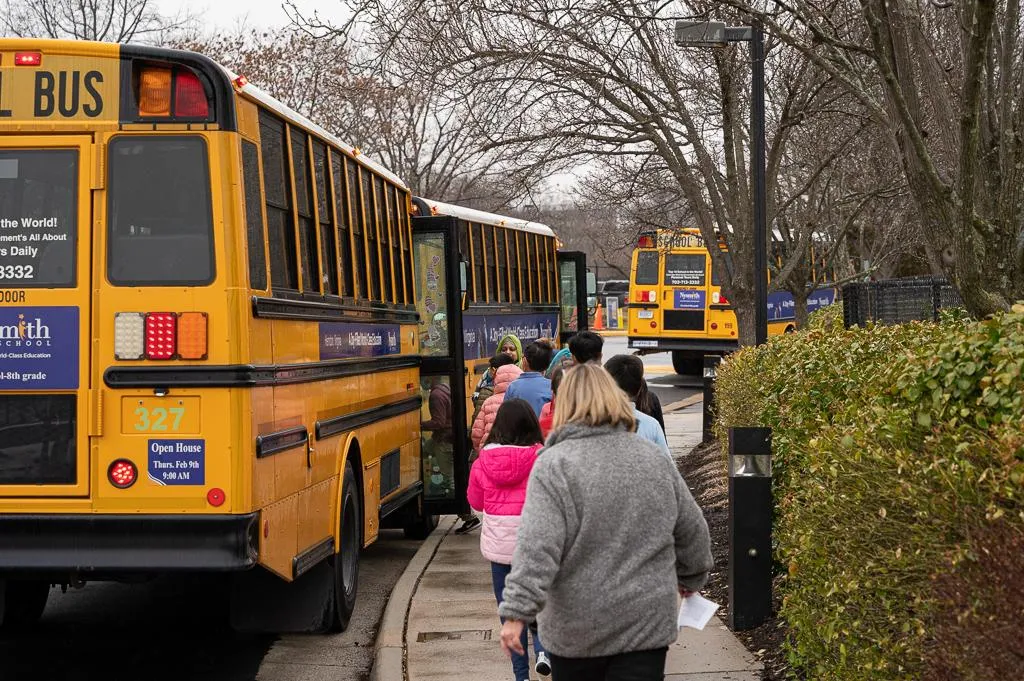
The Power of Choice: How Student Engagement Soars When Learning is Personalized
The Magic of Choice in Learning
Picture this: Your child eagerly diving into a school project—not because it was assigned, but because they got to choose the topic and how they would present their findings. They’re researching, problem-solving, and creating something meaningful, all while genuinely enjoying the process.
Now, contrast that with a more traditional approach—where your child is in a class that completes the same assignment in the same way, with little room for creativity or personal expression. While some students may still thrive, many others will go through the motions, completing the work for the grade rather than for the love of learning.
At Nysmith, we know that choice is a powerful motivator. When students feel a sense of ownership over their learning, their engagement and enthusiasm skyrocket. But the power of choice at Nysmith isn’t just about electives in middle school—it’s woven into everyday learning, starting from the earliest grades.
Why Choice Matters: The Research Behind It

Educational research consistently supports what we see every day in our classrooms: Students who have autonomy in their learning are more engaged, creative, and eager to tackle challenges. According to Deci & Ryan’s Self-Determination Theory, autonomy is one of the key psychological needs that drive intrinsic motivation. When students feel like they have control over their learning, they are more likely to put in effort, take ownership of their work, and retain information longer.
Beyond motivation, choice also builds confidence. When students can decide how to demonstrate their understanding—whether through writing, art, performance, or hands-on creation—they become more deeply connected to the material. This approach encourages risk-taking, problem-solving, and a lifelong love of learning.
Choice in Action: Assignments that Inspire
At Nysmith, student choice doesn’t mean that every assignment is open-ended, but when it makes sense, we provide opportunities for students to showcase their strengths in different ways.
A great example of this can be found in our Language Arts classes. While all students may be reading the same book and analyzing similar themes, how they demonstrate their understanding can vary widely. Some students might write a traditional essay, while others create artwork, compose a song, or even perform a dramatic reenactment of a pivotal scene. This flexibility not only makes the learning experience more engaging but also allows each student to shine in their own way.
By giving students options, we empower them to take ownership of their learning and make meaningful connections to the material.
Project-Based Learning: Where Passion Meets Exploration

Choice is a natural fit for project-based learning (PBL), where students take an active role in shaping their learning experience. PBL fosters curiosity, critical thinking, and collaboration — essential skills that extend far beyond the classroom.
One memorable example comes from a history project on the French Revolution. Students were challenged to demonstrate their understanding of the revolution’s underlying themes in a way that resonated with them. Some built intricate models of the Bastille, others composed original songs of revolution, and a few even constructed working models of the guillotine! While the guillotine may not have been the ideal choice, it was undeniably a testament to deep understanding and creativity. More importantly, it was a project that students still remember years later — proof that when learning is personal, it sticks.
By incorporating choice into project-based learning, we allow students to engage with content in ways that excite them, making learning more meaningful and memorable.
The Bigger Picture: Preparing for Lifelong Learning
The ability to make informed choices is a critical skill that extends far beyond the classroom. When students are given the opportunity to take ownership of their learning, they develop independence, self-motivation, and adaptability — all qualities that will serve them well in high school, college, and beyond.
At Nysmith, this philosophy of choice expands even further in 7th and 8th grade, when students begin selecting from a diverse range of electives. Whether exploring the world of finance, diving into emergency medicine, or discovering a passion for robotics, our students have the freedom to explore new interests and develop skills that align with their personal goals.
By fostering a love for learning through choice, we’re preparing students to become lifelong learners who take initiative, embrace challenges, and pursue their passions with confidence.
Fostering a Love for Learning Through Choice

When students feel ownership over their learning, they become more engaged, motivated, and eager to explore new ideas. By incorporating choice into assignments, projects, and electives, Nysmith empowers students to take charge of their education, develop critical thinking skills, and build a foundation for lifelong success.
As parents and educators, we can all find ways to encourage student choice—whether by allowing children to explore their interests, make decisions about their projects, or even select books that excite them. Because when students want to learn, there’s no limit to what they can achieve.